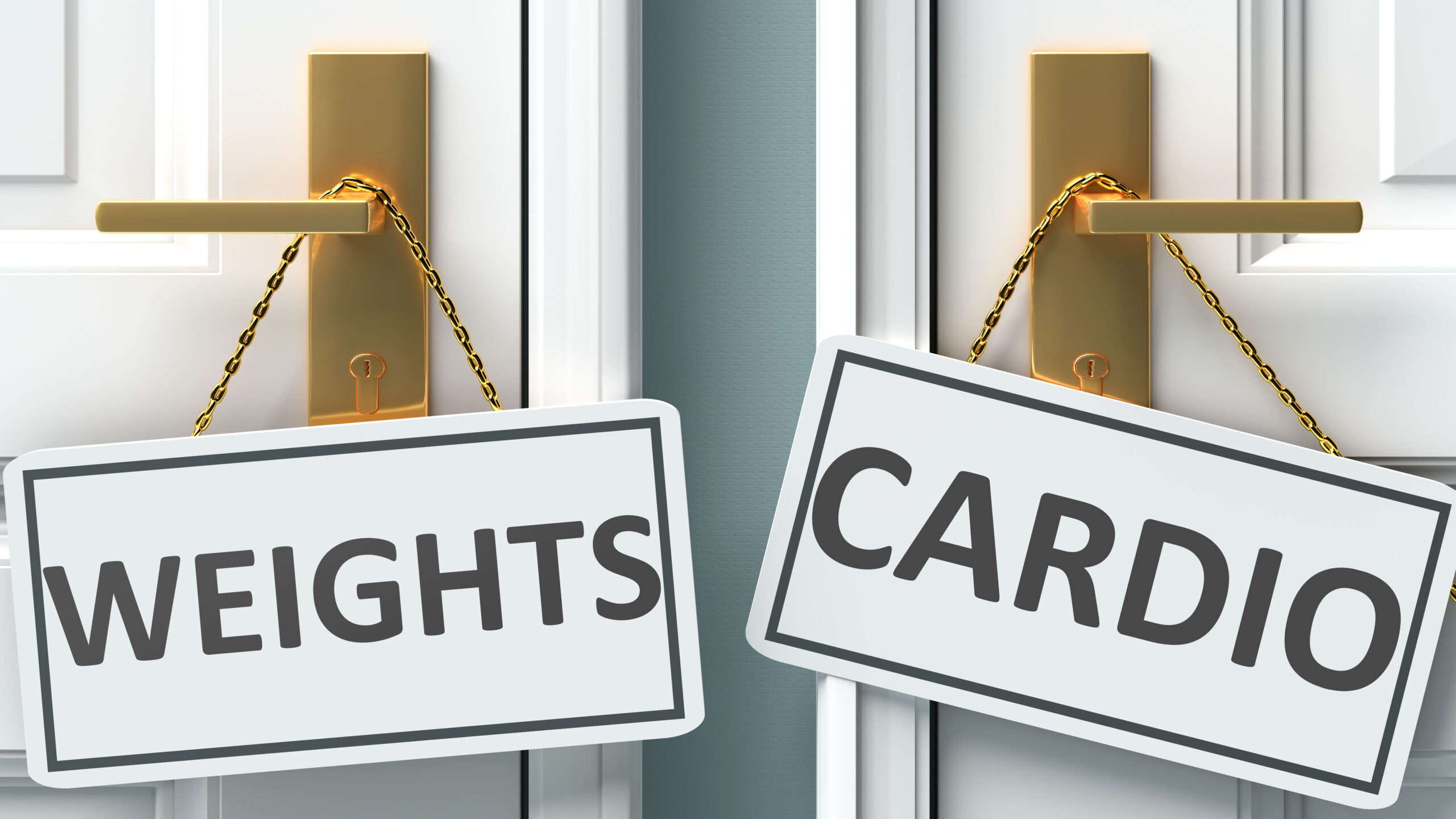It is the debate that has rocked the fitness world. When you want to level up, combining cardio and weights is ideal. But when you do go for that combo, what do you do first? The answer can make a difference in how quickly you level up your fitness game.
The basic debate
If you google cardio or weights first, you will find that the majority of fitness experts will advise you to do the cardio after the weight training, because if you do cardio first, it uses up much of the energy source for your anaerobic work (strength training) and fatigues the muscles before their most strenuous activity. As I explain in my video below, if building muscle is your priority, you will want to to lift weights first:
Since making that video, I have thought about it more and I realized the answer is not that simple. Especially if fitting in working out is challenging enough, which it can be especially aronnd the holidays. So I decided that what would be more useful to busy professionals like us would be to build out a decision tree that recognized both your goals AND your preferences.
Because if you aren’t motivated and don’t end up doing anything, then what is the point of deciding whether to do cardio or weights first?
The Decision Tree, Explained

Option 1 – Do cardio after weights
Best for: If weight loss is your number one goal
The body has to burn through its supply of glycogen before it can burn any fat. Glycogen is stored up sugar that gets used up first before you start burning any fat. If you do cardio first, this happens at a slower pace. But if you do weights first, glucose is absorbed by your muscles at a faster rate because they are working harder. Think of it like a car – if you coast along a road at 25, you will use less fuel than if you stop and then floor it then take your foot off of the gas, which is basically the movements of your muscles during a pump and then a brief recovery. Finishing a resistance workout with cardio is like throwing an accelerant on top of an already burning fireplace.

Option 2 – Cardio before weights
Best for: You want to build endurance
If you are training for a race, which is a great idea to get you out of the house for the winter, then you probably want to engage your energy towards cardio first so that you can get the most power and velocity. Performing cardio takes energy from the energy stores needed to sustain aerobic or cardiovascular exercise. Weight training with depleted energy stores also enhances muscular endurance. Striving to enhance endurance is an excellent goal for long-distance or marathon runners, as it improves fatigue resistance and develops slow-twitch muscle fibers needed for endurance-based sports.
Option 3 – Cardio and weights combined in one workout
Best for: You want to lose weight but you hate one of these with a passion
OK I get it. Some of us love the runners high, and some of us are gym rats. We can all co-exist, just like Republicans and Democrats. If you detest cardio or weihts, you may not have the wherewithal to do two workouts a day, or you may show up with the best intentions to do them consecutvely, then conveniently use up your cardio or weights time before you have to go. I have been there!
You can combine cardio and weights in a single high-intensity interval training (HIIT) workout, like a kettlebell session or slam ball workout, can give you both velocity and power. If you are more of a yoga or pilates type of exerciser, there are many ways to incorporate both cardio and resistance training into those workouts. There are hybrid Pilates, Barre and Cardio workouts, like Bala Bangle Barre Burn, or Pure Barre Empower, or Pilates-HIIT Fusion workouts (like Pilates Remix At Equinox)
You can read my guide to Equinox classes here:
How to combine weights and cardio
Put cardio into your weights
You can also incorporate cardio into your existing weight training by doing higher intensity during sets and less rest between sets. Strength training can double as cardio, especially with the use of metabolic resistance training (MRT). MRT is a form of circuit strength training performed with heavy resistance and little to zero rest between sets, targeting the entire body.⁸ MRT can also incorporate HIIT plyometrics movements like jump squats, mountain climbers, burpees, and jump lunges, in between circuits to keep the heart rate high.
You can also add a high-intensity cardio “finisher” at the end of your workout. A few rounds of burpees, mountain climbers or even squat jumps can get your heart pumping and cap off that resistance training with some extra fat burn. I explain more about finishers in my strength training post. Essentially, it is what it sounds like the last 5 minutes of your workout where you go all out and hard.
Put weights more into your cardio
If you are more of a cardio person, try doing cardio with weight lifting “breaks” - take breaks during your cardio. So run or bike or be on the elliptical for about 10 or 15 minutes, and then take a five minute break and do some squats, do some stretching.

Option 4 - Two-a-days
Best for: You want to do both cardio and weights in the same day but are short on time
If you can’t carve out more than 20 minutes at a time, or it is too overwhelming to combine cardio and weights in one session, this is your best bet. Plus, the second workout will rev up your metabolism and give you a second wind.
You could break up the two - do cardio in the morning to warm up and wake up, and then weights in the afternoon as a lunch break or after work. Or conversely, if you are a morning person, take advantage of the spike in your cortisol level and hit the weights and then save a brisk evening walk or commute home from the office for your cardio. Or, sign up for an evening zumba or spin class.
How often should you do cardio and weight training?
According to the U.S. Department of Health and Human Services recommends adults have at least 150 minutes of moderate intensity cardio or 75 minutes of vigorous intensity cardio a week
The same guidelines identify about twice a week for strength training, however, many trainers also recommend an additional day especially if you are focused on building muscle and fat loss.
That extra day does not have to be in the weight room - it can be a power yoga class or even a barre or pilates class if those incorporate a lot of additional movements like standing leg work and push-ups (which you can find in workouts offered by Corepower, Solid Core, and Pure Barre).
You can easily meet the cardio-weights quota with my 4-3-2-1 Exercise Formula for Success, which I cover in this post
So to recap, my 4-3-2-1 formula would break down as follows:
- Cardio - 4 times a week
- Strength training - 1 time per week
- Precision training (including pilates and lighter yoga) - 1 time per week
Other Reading
WORKOUT DILEMMA: CARDIO OR WEIGHTS FIRST? (One Life Fitness)
Cardio before or after weights? (Women's Health Magazine)






